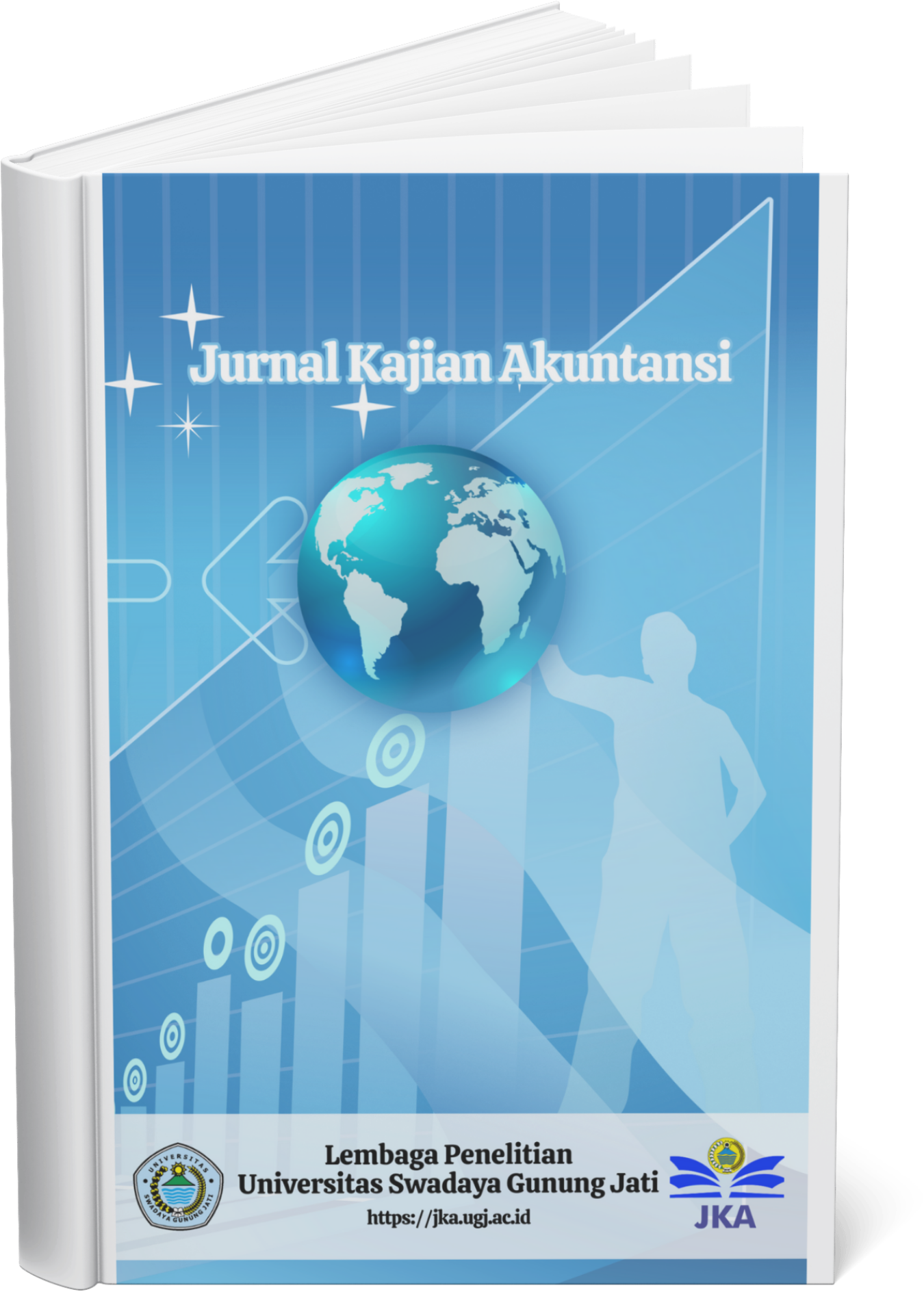Kaizen Costing sebagai Perbaikan Berkelanjutan untuk Meningkatkan Keunggulan Bersaing pada E-Commerce
DOI:
https://doi.org/10.33603/jka.v3i1.2136Abstract
This study aims to analyze the application of kaizen costing as a continuous improvement to improve the competitive advantage of e-commerce. Kaizen is widely applied to Japanese companies with the concepts of 3M (Muda, Mura, Muri) and 5S (Seiri, Seiton, Seiso, Seiketsu, Shitsuke) that can help management in managing workplaces, improve employee discipline, reduce waste, improve company quality and efficiency . E-commerce as the object of research is PT Aplikasi Karya Anak Bangsa (Go-Jek Indonesia) which involves employees, drivers, and customers as research samples. The method of data collection is done through observation, documentation, interviews and questionnaires. Methods of data analysis through descriptive analysis and verification using the Partial Least Square (PLS) program. Based on the survey results, respondents' responses and company conditions concluded that Go-Jek had implemented the kaizen costing concept in the face of e-commerce competition. However, only the variables Muri, Seiso, Seiketsu, Shitsuke which only have a significant effect on the variable of competitive advantage. This is because the number of respondents who have not felt the effectiveness of the company in implementing kaizen costing.
Keywords: Kaizen costing; Continuous improvement; 3M; 5S; Competitive advantage
References
Abdurrahman, M. S. 2017. Transaksi e-commerce Indonesia akan capai Rp 144 Triliun. Diunduh tanggal 10 November 2018 https://www.liputan6.com.
Almansour, Y. M. (2012). The Impact of Total Quality Management Components on Small and Medium Enterprises Financial Performances in Jordan. Journal of Arts, Science and Commerce, 3(2). 2231-4172.
Fatkhurrohman, A., & Subawa. (2016). Penerapan kaizen dalam meningkatkan efisiensi dan kualitas produk. Jurnal Administrasi Kantor, 4 (1), 1431.
Ghozali, Imam. 2015. Partial Least Square Konsep, Teknik, dan Aplikasi menggunakan program AmartPLS 3.0. Universitas Diponegoro.
Indrajaya, Muhammad Herman. Fathoni, Aziz. Minarsih, Maria Magdalena. 2016. Pengaruh Budaya Kaizen Terhadap Kinerja Karyawan Dengan Self Efficacy Sebagai Variabel Moderating. Journal Of Management, 2 (2).
Imai, Masaaki (2018). Gemba Kaizen Pendekatan akal sehat, berbiaya rendah pada manajemen. Jakarta: PPM.
JNP, CNN Indonesia., Institute for development of economics and finance (2018). Order fiktif bukan semata demi kantongi insentif. Diunduh pada tanggal 5 Januari 2019. http://m.cnnindonesia.com.
Kadarningsih, A. (2013). Keunggulan Bersaing: Faktor-Faktor yang Mempengaruhi Dan Dampaknya pada Kinerja Selling-In. Media Ekonomi & Teknologi Informasi, 21 (1), 118.
Katadata, T. P. (2016). Infografik: Indonesia, Pusat E-commerce ASEAN. Diunduh pada tanggal 20 November 2019. https://katadata.co.id/infografik/2016/01/04.
Laura, Netty and Paramita, Catarina Cori Pradnya. 2018. Pengaruh Konsep Kaizen (5S) terhadap Peningkatan Daya Saing UKM. Jurnal Pengabdian dan Kewirausahaan. 38-50.
Malinia, S.: Upravljako-raunovodstveni aspekt Kaizen Costing-a, RaÄunovodstvo, SRRS, Beograd, Srbija, 2008.
McDaniel C & Gates R. 2013. Riset Pemasaran Kontemporer. Penerjemah: Sumiyarto dan Rambat Lupiyoadi. Jakarta: Salemba Empat.
Mulyati, D., & Darmawan, T. (2013). Implementasi Manajemen 5S pada CV . Rapi Vulkanisir Aceh Besar. Malikussaleh Industrial Engineering Journal, 2 (2), 1015.
Mulyani, S., & Wijayani, D. R. (2017). Penerapan TQM dan Kinerja Inovasi terhadap Kinerja Manajerial Industri Rokok Kabupaten Kudus. Jurnal Kajian Akuntansi, 1(2).
Nurfadilah, P. S., & McKinsey. (2018). McKinsey: Tahun 2022, pasar E-commerce Indonesia capai Rp 955 Triliun. Diunduh pada tanggal 21 November 2018. https://ekonomi.kompas.com.
Pamungkas, E., & Franksiska, R. (2018). Analisis Pengaruh Budaya Kaizen Terhadap Kinerja Karyawan Dengan Reward Sebagai Variabel Moderasi Dalam Rangka Penguatan Daya Saing Bisnis.
Porter, M. (2008). Strategi Bersaing (competitive strategy). Tanggerang: Karisma publishing group.
Radovi, N. (2017). Kaizen Costing in Serbian SMEs: A Case Study of Perform Ltd. International Scientific Conference, (October), 2431.
Richard. (2018). Pengaruh Perceived Ease of Use dan Perceived Usefulness terhadap Buying Interest melalui fitur Go-Food pada aplikasi Gojek di kota. 6 (4), 1321333.
Sekaran, U., & Bougie, R. (2016). Research methods for business: a skill-building approach (Seventh ed). Chichester, West Sussex, United Kingdom: John Wiley & Sons.
Soesilo, Rahman. 2017. Implementasi Kaizen dan konsep 5S pada pengeringan produk diproses plating pabrik busi. Jurnal Teknik Industri 18 (2) 121-126.
Statistik, B. P. (2016). Data Sensus Ekonomi. Diunduh pada tanggal 23 November 2018 www.bps.co.id.
Supiah Laelasari. Pengaruh Metode 5S (Seiri, Seiton, Seiso, Seiketsu dan Shitsuke) Terhadap Kualitas Kerja Karyawan (Survey Pada Staf Karyawan Perusahaan CV. Subur Jaya Honda Tasikmalaya). Program Studi Manajemen Fakultas Ekonomi Universitas Siliwangi Tasikmalaya.
Supriyanto, Agus. 2014. Pengaruh Sikap Kerja 5S (Seiri, Seiton, Seiso, Seiketsu, Shitsuke) Terhadap Produktivitas Kerja. Riset Manajemen dan Akuntansi 5 (9).
Yohendry, Hapsara, O., & Surono, Y. (2017). Implementasi Kaizen terhadap Efisiensi Biaya Produksi PT Dasa Anugerah Sejati Asian Agri Jambi. J-Mas, 2(2), 196205.
Downloads
Published
How to Cite
Issue
Section
License
- Authors retain copyright and grant the journal right of first publication with the work simultaneously licensed under a Creative Commons Attribution-ShareAlike (CC-BY-SA 4.0) that allows others to share the work with an acknowledgment of the work's authorship and initial publication in this journal.
- Authors are able to enter into separate, additional contractual arrangements for the non-exclusive distribution of the journal's published version of the work (e.g., post it to an institutional repository or publish it in a book), with an acknowledgment of its initial publication in this journal.
- Authors are permitted and encouraged to post their work online (e.g., in institutional repositories or on their website) prior to and during the submission process, as it can lead to productive exchanges, as well as earlier and greater citation of published work.
